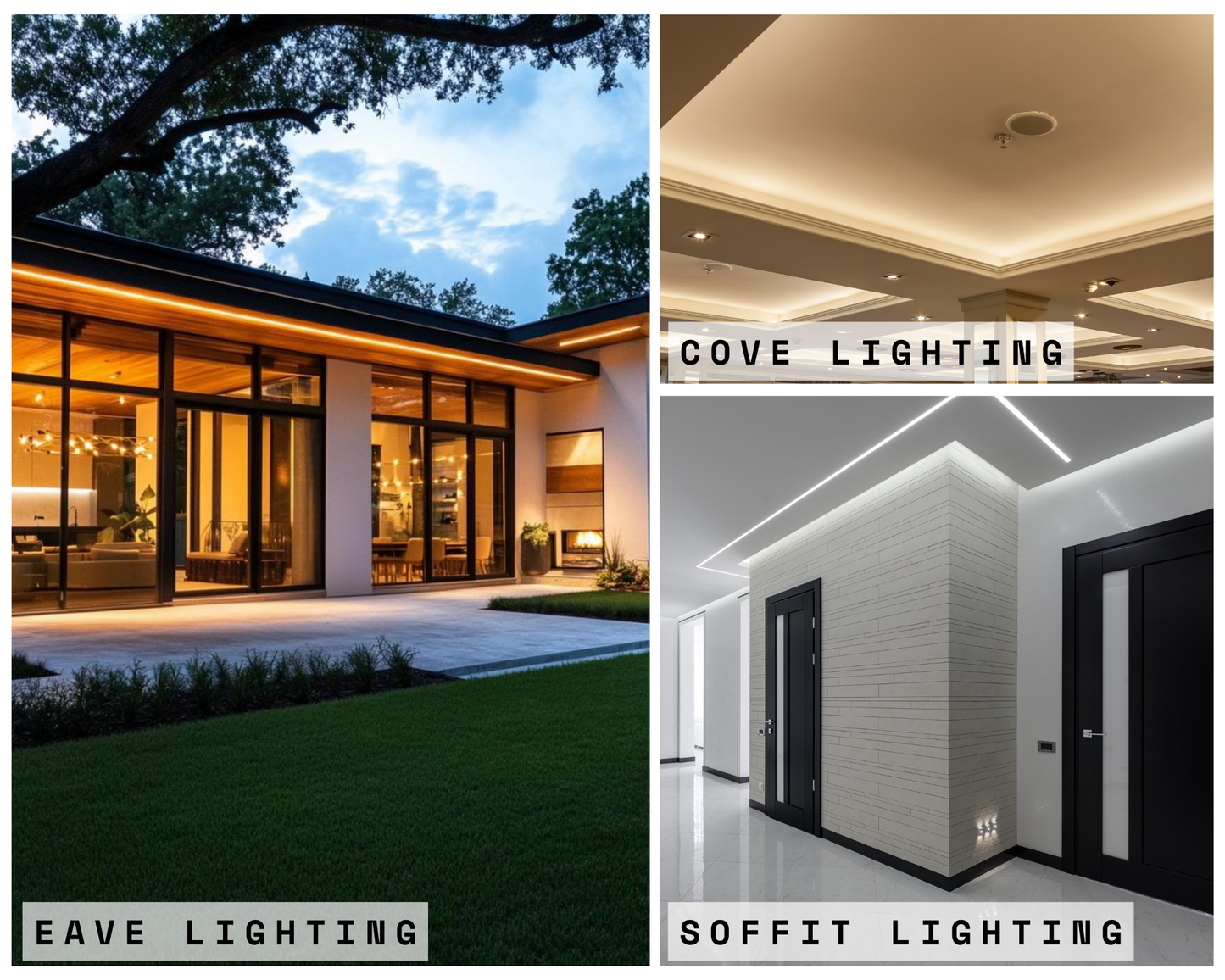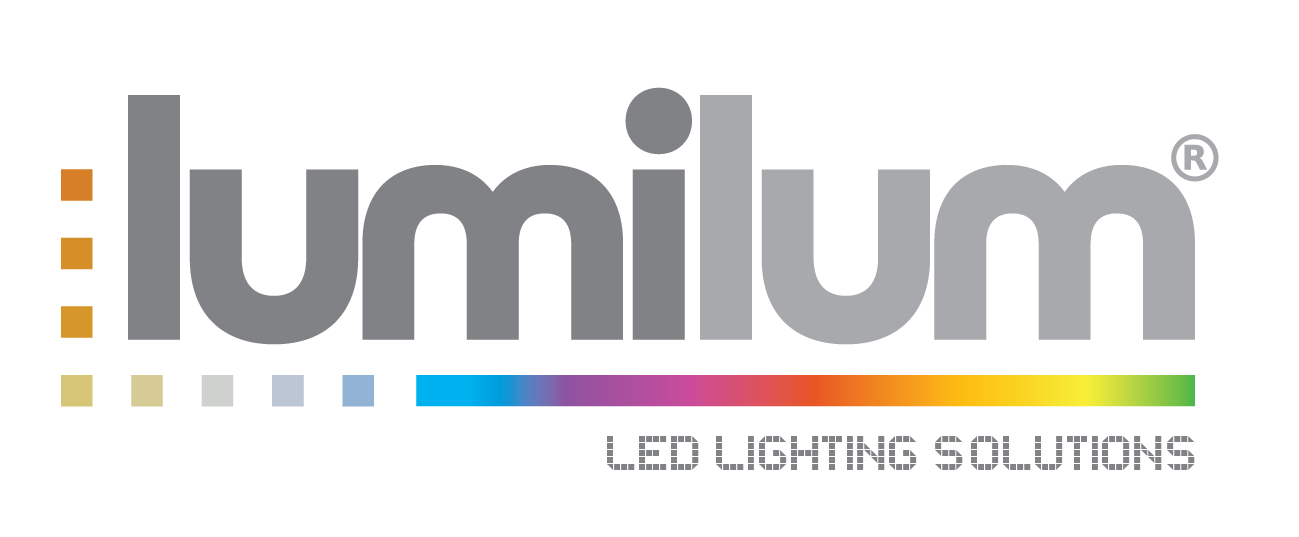
Understanding Soffit, Eave, and Cove Lighting: Differences and Design Impacts
Lighting is critical in interior and exterior design, shaping how spaces are experienced and perceived. Among the many lighting techniques available, soffit, eave, and cove lighting are three of the most popular options designers and homeowners use to enhance aesthetics and functionality. Although they may seem similar initially, these lighting styles serve distinct purposes and create different effects. Let’s explore the differences between soffit, eave, and cove lighting and how each influences the way light looks and feels.
What Is Soffit Lighting?
Soffit lighting refers to fixtures installed in a soffit—a horizontal structure that extends from a wall or ceiling. These lights are typically recessed or surface-mounted and direct light downward or outward.
Uses:
- Outdoor: building exteriors, porches, and pathways.
- Indoor: task lighting in kitchens, workspaces, or hallways.
Effect: Soffit lighting provides focused and direct illumination, making it excellent for accentuating architectural details, creating a sense of security outdoors, or enhancing functional areas indoors. The downward projection produces sharper shadows and a clear, defined light.
For more ideas, check out this guide on outdoor soffit lighting.
What Is Eave Lighting?
Eave lighting refers to fixtures installed under a roof's eaves - the overhanging edges that extend beyond a building’s walls. These lights are typically weather-resistant and designed to highlight the exterior.
Uses:
- Illumination for accent walls, facades, and landscapes.
- Highlighting outdoor architectural features or providing ambient lighting around the perimeter of a structure.
Effect: Eave lighting creates a subtle, evenly distributed glow that washes over walls or nearby surfaces. This lighting enhances a building’s curb appeal and provides a welcoming ambiance. It’s less intense than soffit lighting, perfect for creating a soft, elegant atmosphere.
Find inspiration for eave lighting ideas.
What Is Cove Lighting?
Cove lighting involves placing light fixtures in a recessed cavity, typically along the upper edges of walls or ceilings. The light is directed upward or across a surface, resulting in indirect illumination.
Uses:
- Creating ambient lighting in living rooms, bedrooms, or commercial spaces.
- Adding a touch of luxury to ceilings or architectural coves.
Effect: Cove lighting produces a diffuse, gentle glow that spreads evenly throughout a space. By eliminating harsh shadows and direct glare, it fosters a serene and sophisticated environment. It’s ideal for accentuating ceiling details, such as tray or coffered designs, or for setting a calming mood.
Explore cove lighting ideas and trends.
Key Differences in Lighting Perception
Direction of Light:
- Soffit lighting is directional, providing focused illumination downward or outward.
- Eave lighting washes surfaces with light, creating a broader, more diffused glow.
- Cove lighting offers indirect light, resulting in a soft and ambient effect.
Intensity and Shadows:
- Soffit lighting creates sharper shadows and stronger contrasts due to its direct focus.
- Eave lighting produces softer shadows and a balanced light distribution.
- Cove lighting eliminates shadows almost entirely, enveloping the space in an even, ethereal glow.
Applications and Ambiance Type:
- Soffit lighting is functional and architectural, suited for task-oriented spaces or highlighting features.
- Eave lighting enhances outdoor aesthetics and provides subtle, perimeter lighting.
- Cove lighting is decorative, adding elegance and depth to interiors.
Choosing the Right Lighting for Your Space
Selecting between soffit, eave, and cove lighting depends on your goals:
- Soffit lighting is your best bet for focused, practical lighting, such as illuminating workspaces or enhancing security.
- Eave lighting is an excellent choice for adding curb appeal or softly highlighting exterior elements.
- If you aim to create a relaxed and luxurious ambiance, cove lighting is the way to go.
Combining these lighting types can further elevate a space. For example, pairing soffit lighting with cove lighting can balance functionality and mood in a single room. Similarly, blending eave and soffit lighting can enhance both safety and aesthetics outdoors.
| Feature | Soffit Lighting | Eave Lighting | Cove Lighting |
|---|---|---|---|
| Light Direction | Downward or outward. | Washes surfaces evenly. | Indirect, upward glow. |
| Shadow Effect | Sharp contrasts. | Soft, balanced shadows. | Shadowless ambiance. |
| Primary Use | Functional and architectural. | Outdoor aesthetics. | Decorative and ambient. |
Understanding the differences between soffit, eave, and cove lighting is key to making informed design choices. Each lighting type brings its own unique qualities to the table, shaping how light interacts with architectural features and the overall atmosphere of a space. Whether you’re designing for functionality, aesthetics, or both, thoughtfully integrating these lighting styles can transform your home or building into a well-lit masterpiece.
